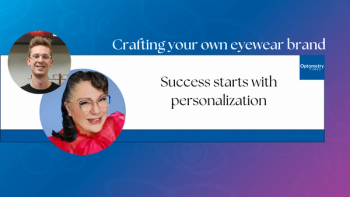
NCCVEH at Prevent Blindness assembles new Children’s Vision Equity Alliance
The National Center for Children's Vision and Eye Health (NCCVEH) announced the creation of a new Children's Vision Equity Alliance (CVEA), a decade-plus initiative.
The basis for this is the realization that socioeconomic and racial inequities that impact all aspects of health care in the US cause certain racial and ethnic groups to face increasing challenges in preserving health and well-being.
Vision is also a factor that is impacted by disparities that should be addressed because healthy vision supports early childhood development, readiness for school, overall health, and lifelong well-being.
To meet these needs, the CVEA was formed to unite experts with various areas of expertise in health, education, and public health organizations in the US to create resources and programs to improve vision and eye health for all children. The CVEA will work to advance equity in children’s vision and eye health through education, access, policies, and partnerships.
Report of inequities
A recent publication of the NCCVEH, “
In light of this, the stated goals of the CVEA are to:
- Foster education about the role of vision in the learning, health, and development of children in the target population of underserved communities of color (specifically Black/African-American, Indigenous and Latinx communities), beginning with a social media campaign to educate targeted populations.
- Advocate for policies and practices to support equitable access to vision care for children, some of which include developing strategies to decrease barriers to obtaining care, address the lack of trust in the medical establishment, promote a diverse and inclusive community among eye care providers, improve insurance coverage policies that support vision health, advance public health and educational policies, and empower and enable families to take action to support vision and eye health of their children.
- Develop partnerships to support healthy vision and eye health equity for children.
- And continue to attract leaders from ophthalmology, optometry, public health, school nursing, early childhood care and education, medical care, and parent education and engagement who work toward health equity.
According to Jeff Todd, president and CEO of Prevent Blindness, “Through the new CVEA, coordinated by the NCCVEH at Prevent Blindness, we are working collaboratively with leaders, stakeholders and advocates to make sure we evolve and grow to effectively and strategically respond to the needs of families in underserved populations and communities.”
Individuals interested in obtaining more information about the CVEA or children’s vision health topics are invited to visit
Newsletter
Want more insights like this? Subscribe to Optometry Times and get clinical pearls and practice tips delivered straight to your inbox.
















































.png)


